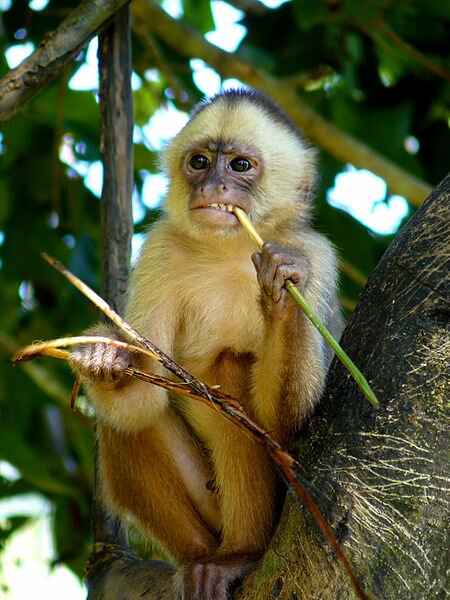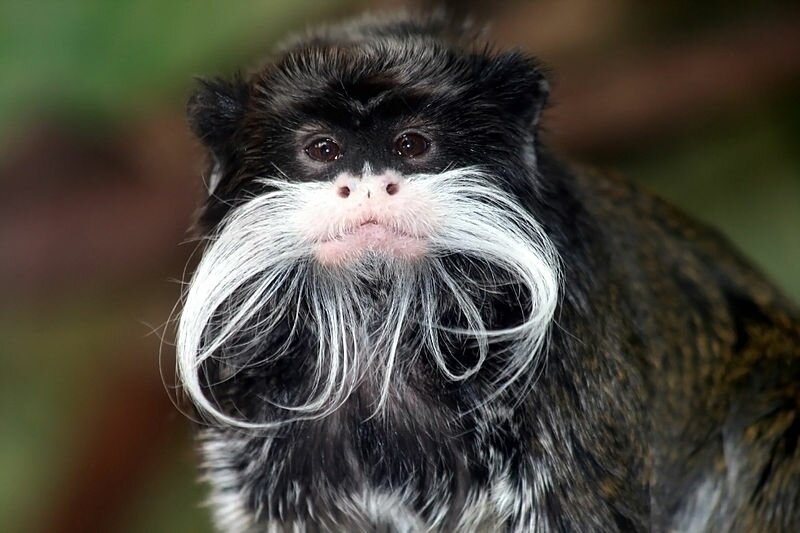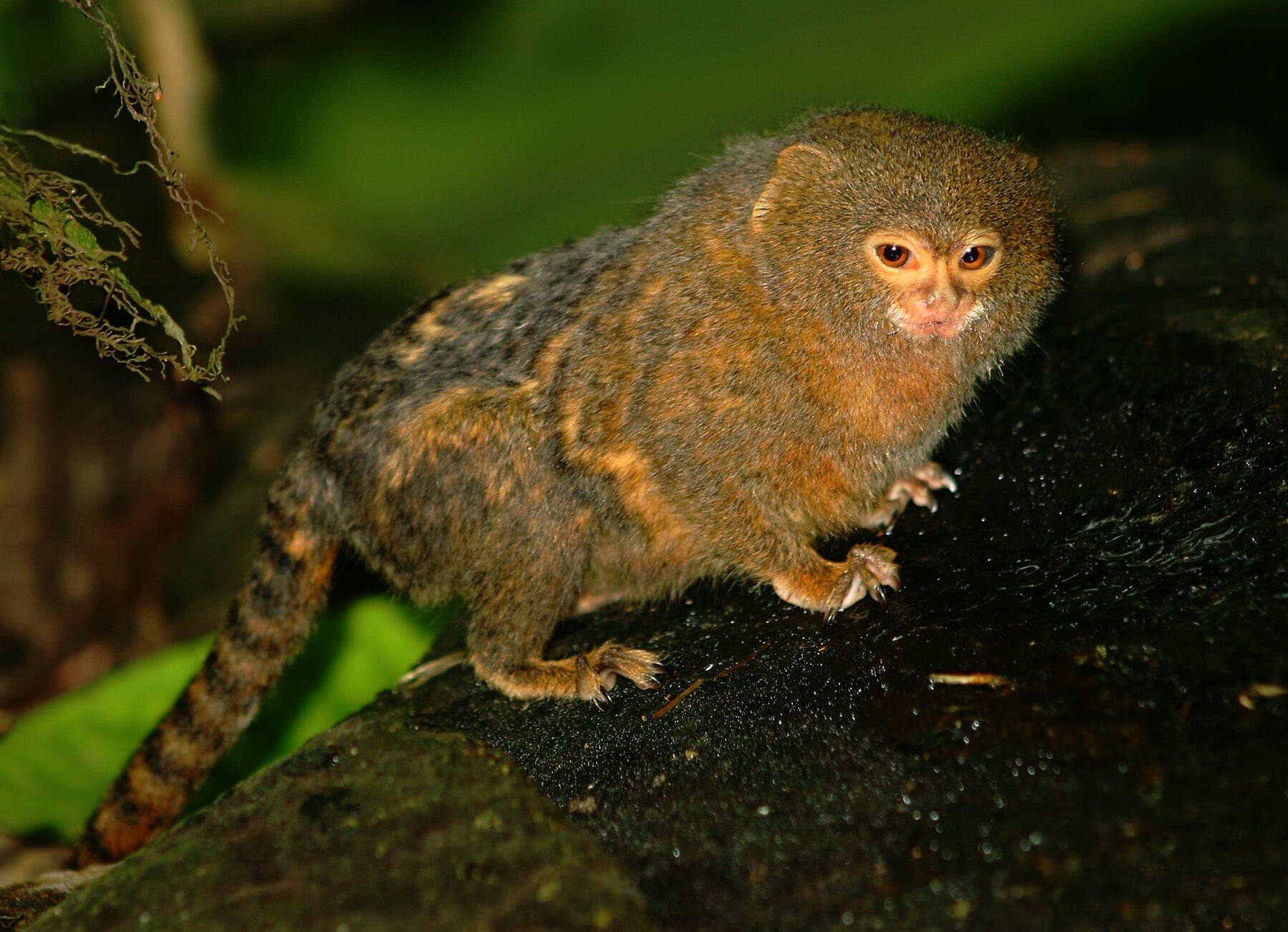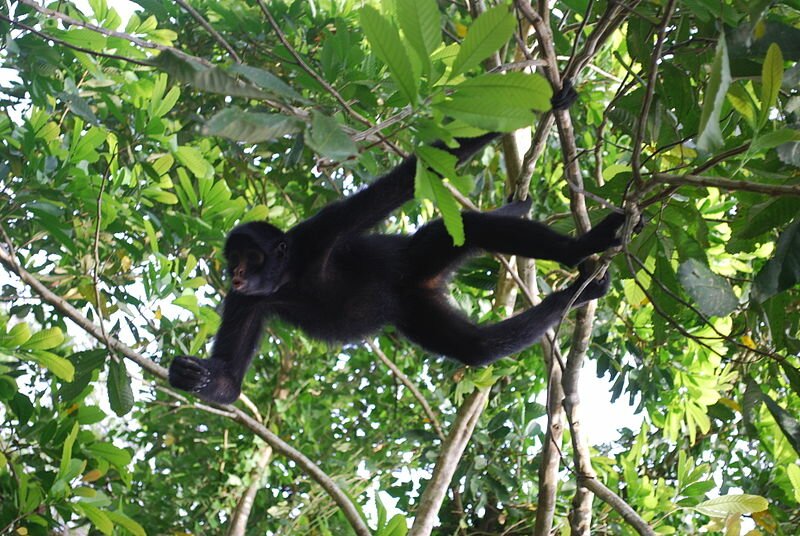Monkeys are often the animals that travelers want most to see when they visit the Amazon. Indeed, if you take a trip down to the Amazon and leave without seeing a monkey, you've missed an opportunity to encounter one of the world's most fascinating and beloved creatures! You're sure to spot at least a few of these amazing animals if you explore the forest with a knowledgeable local guide. Here are a few of the most peculiar and wonderful types of monkeys you can find in the Amazon:
Capuchin monkey
Capuchin monkeys are small creatures at around 3 pounds and so named as their distinctive coloring reminded explorers of the brown hooded robes of Capuchin Friars. Capuchin monkeys can jump up to nine feet, often bounding through the air from one tree to another. They are very clever animals and have been observed using leaves as cups to drink water from tree cavities. They feed on fruits, insects, and small birds and frogs.

Emperor Tamarin
Many species of tamarin inhabit the forests of the Amazon, including the striking emperor tamarin, named for its resemblance to the mustachioed German emperor Wilhelm II. Tamarins are generally small creatures, growing no longer than 10 inches. They are known to be graceful, playful, and friendly in the wild. Emperor tamarins live in the southwest Amazon Basin where the borders of Peru, Bolivia, and Brazil intersect. A great place to seen an emperor tamarins is Manú National Park in Peru.

Pygmy marmoset
Even more unique than tamarins are marmosets, a family of tiny monkeys that are often endemic to a very small area. The pygmy marmoset pictured here is the smallest monkey in the world, weighing just over 3.5 ounces. The normally live in groups of six and communicate with each other via vocal calls, visual displays, and chemical secretions. The pygmy marmoset can rotate its head 180 degrees and feeds on the natural gum of trees. They inhabit much of the western Amazon Basin, and can be found in Brazil, Colombia, Ecuador, Peru, and Bolivia.

Howler monkey
The specialized vocal chamber of a howler monkey allows it to make those characteristic booming territorial calls that can be heard from three miles away--the loudest sound of any land animal. The first time you hear a howler monkey in person, it can be quite startling! They are relatively large (around 20 pounds) and slow-moving, and are the only folivores (leaf-eaters) of the New World monkeys. There are a variety of different species of howler monkey; the photogenic red howler pictured here was photographed in the southwestern region of the Amazon basin in Peru.

Photo by Tambopata Research Center.
Spider monkey
With their disproportionately long limbs and prehensile tails, spider monkeys are one of the largest as well as one of the most intelligent monkeys of the Amazon. Their bodies are about two feet long while their tails grow up to three feet long. As you might guess, spider monkeys use their long, strong tail as an extra limb, swinging with great agility from branch to branch.

Squirrel monkey
Even smaller than capuchin monkeys at around 2 pounds, squirrel monkeys have been known to travel in packs of up to 500 individuals! They are naturally inquisitive and spend more time on the forest floor than any other Amazon monkey species, avoiding the upper canopy to hide from large birds of prey looking for a meal. Their diet consists primarily of fruits and insects.




#1 by Carol Nye on 1/22/14 - 12:36 PM